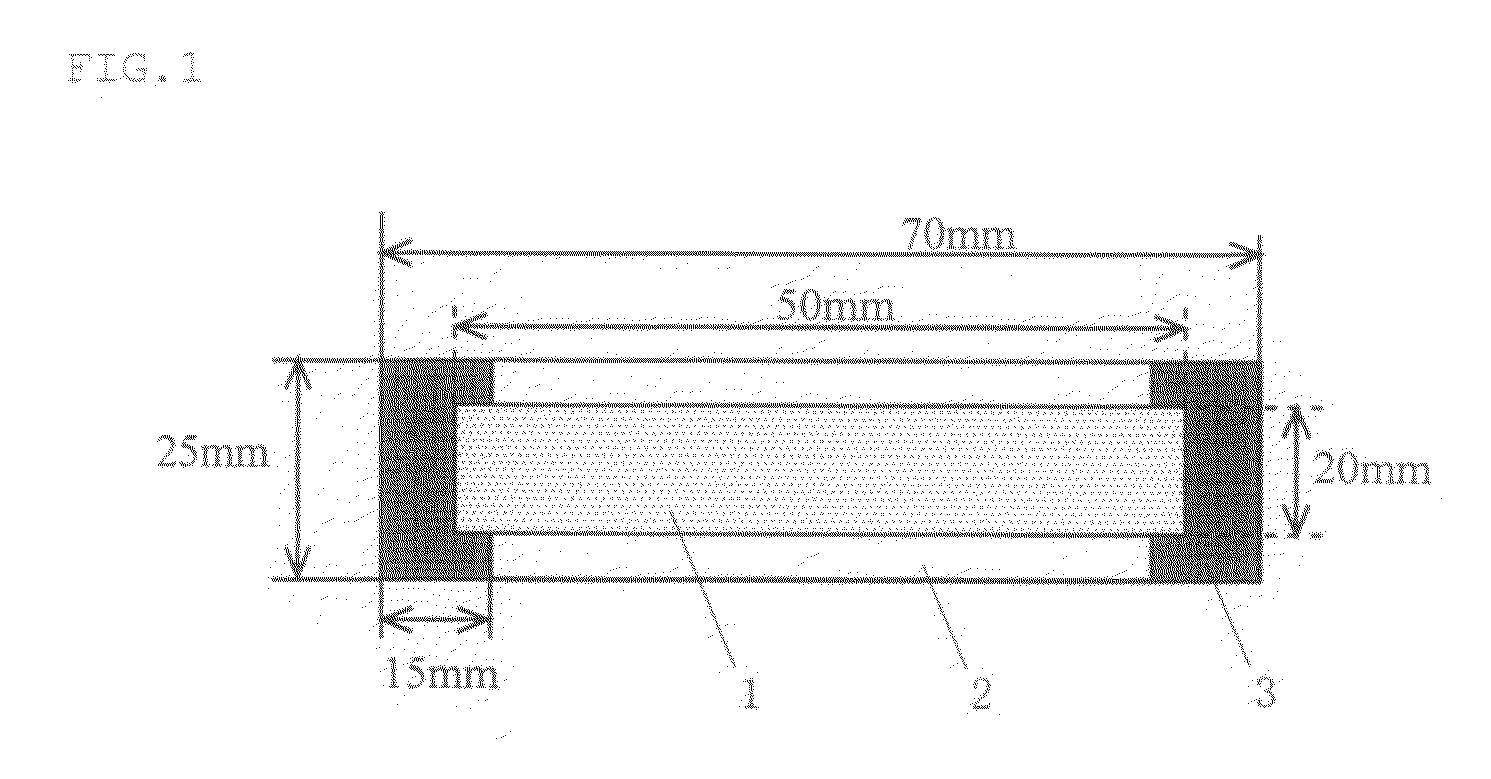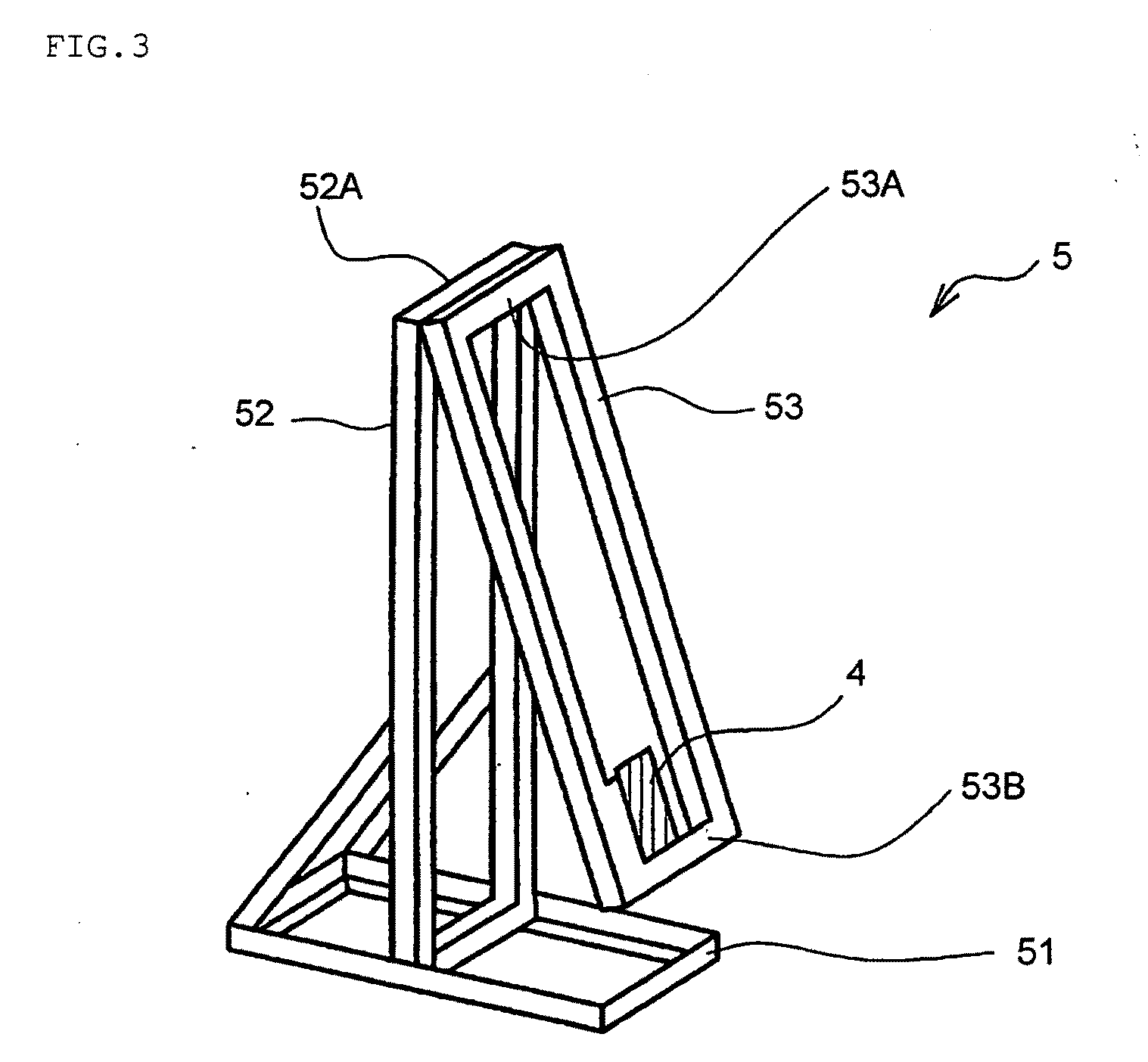Pressure sensitive adhesive composition, product using the same, and display using the product
a technology of pressure-sensitive adhesives and compositions, applied in the direction of adhesive types, transportation and packaging, layered products, etc., can solve the problems of unsuitable display use, promote nicks (indentation), and poor adhesive performance, and achieve excellent anti-corrosion properties, high reliability, and coatability. good
- Summary
- Abstract
- Description
- Claims
- Application Information
AI Technical Summary
Benefits of technology
Problems solved by technology
Method used
Image
Examples
preparation example 1
of Acrylic Polymers
[0093]Acrylic Polymer A
[0094]In a separable flask were placed 70 parts by weight of 2-methoxyethyl acrylate, 29 parts by weight of 2-ethylhexyl acrylate, and 1 part by weight of 4-hydroxybutyl acrylate as monomer components; 0.2 part by weight of 2,2′-azobisisobutyronitrile as a polymerization initiator; and 100 parts by weight of ethyl acetate as a polymerization solvent. The mixture was stirred for 1 hour while introducing nitrogen gas thereinto. After removing oxygen therefrom in this manner, the polymerization system was heated at 63° C. to carry out a reaction for 10 hours, and the reaction mixture was combined with toluene to give an acrylic polymer solution (hereinafter also referred to as “Acrylic Polymer Solution A”) having a solid content of 25 percent by weight. An acrylic polymer in Acrylic Polymer Solution A (hereinafter also referred to as “Acrylic Polymer A”) had a weight-average molecular weight of 150×104.
[0095]Acrylic Polymers B to K
[0096]A serie...
example 1
[0097]A pressure-sensitive adhesive composition (solution) was prepared by mixing, in terms of solids content, 100 parts by weight of Acrylic Polymer Solution A (i.e., 100 parts by weight of Acrylic Polymer A) with 0.3 part by weight of a polyfunctional isocyanate compound (supplied by Nippon Polyurethane Industry Co., Ltd. under the trade name of “Coronate L”) as a crosslinking agent.
[0098]The prepared solution was cast onto a release-treated surface (surface which had been subjected to a release treatment) of a poly(ethylene terephthalate) (PET) film (38 μm thick) as a release liner to a thickness after drying of about 25 μm, heated and dried at 130° C. for 3 minutes, further aged at 50° C. for 72 hours, and thereby yielded a pressure-sensitive adhesive sheet of substrate-less type.
preparation example 2
of Acrylic Polymers
[0132]Acrylic Polymer L
[0133]Predetermined amounts of monomer components and ethyl acetate as a polymerization solvent as in Table 3 were placed in a separable flask, and the mixture was stirred for 1 hour while introducing nitrogen gas thereinto. After removing oxygen therefrom in this manner, the polymerization system was heated to 63° C., combined with 0.2 part by weight of 2,2′-azobisisobutyronitrile as a polymerization initiator, reacted for 10 hours, combined with MEK (methyl ethyl ketone), and thereby yielded an acrylic polymer solution having a solid content of 25 percent by weight (hereinafter also referred to as “Acrylic Polymer Solution L”).
[0134]Acrylic Polymers M to T
[0135]A series of acrylic polymer solutions (hereinafter also referred to as “Acrylic Polymer Solutions M to T”) was prepared by the above procedure, except for changing the types and amounts of monomer components, and the amount of the solvent (ethyl acetate) as in Table 3.
[0136]Acrylic ...
PUM
| Property | Measurement | Unit |
|---|---|---|
| Tg | aaaaa | aaaaa |
| Tg | aaaaa | aaaaa |
| temperatures | aaaaa | aaaaa |
Abstract
Description
Claims
Application Information
 Login to View More
Login to View More - R&D
- Intellectual Property
- Life Sciences
- Materials
- Tech Scout
- Unparalleled Data Quality
- Higher Quality Content
- 60% Fewer Hallucinations
Browse by: Latest US Patents, China's latest patents, Technical Efficacy Thesaurus, Application Domain, Technology Topic, Popular Technical Reports.
© 2025 PatSnap. All rights reserved.Legal|Privacy policy|Modern Slavery Act Transparency Statement|Sitemap|About US| Contact US: help@patsnap.com



